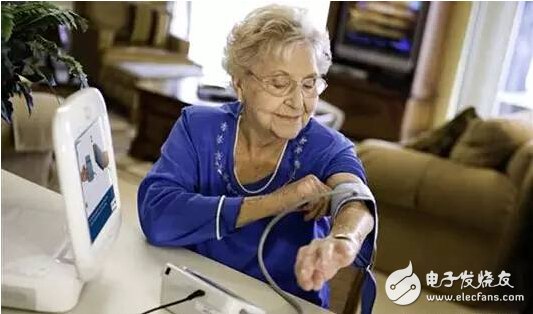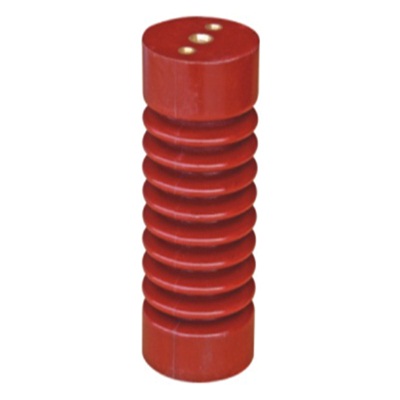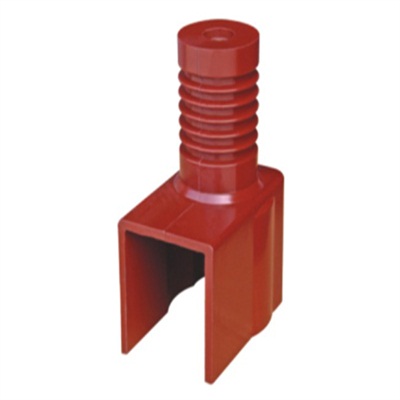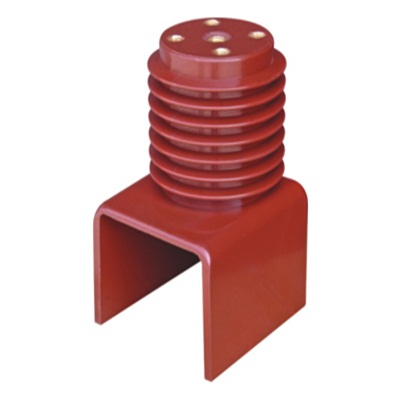After two years of hot speculation, wearable devices gradually faded away from the original fashion and cool concept. Although the bubble in this field remains, many people have begun to think about the next practical direction of wearable devices. Smart medical care is considered to be the main battlefield for wearable devices, and research institute IHS predicts that wearable devices in the future medical and health field will account for more than 50% of wearable devices. For now, wearable devices are still on the verge of smart healthcare. Because of the cross-border innovation, the need for wearable devices to occupy a place in smart medical care requires a long-term layout process. Those who insist on professional-grade equipment research and development and continuous data accumulation will grow into excellent enterprises in the industry in the wave of smart medical care.

Breakthrough in homogenization: professional carrying the future of wearable devices
Throughout the various types of wearable medical equipment available on the market, most of the products can provide several functions such as sports step, calorie consumption, calorie calculation, sleep monitoring and other technical thresholds, and many equipments are The measurement of data such as number and heat is not accurate and does not bring substantial value to users. Quoting a user's Tucao: "Step by step? Do you really know how many steps you take every day? It's more than a dozen pedometers. It's more intuitive. It's sleep time? Get up early every morning. I don't have to look at it, I also know that I slept well last night, I didn't sleep well, and the data will not give me blood." It can be said that this homogenization has become a typical representative of wearable device foam. Although various concepts can attract some users to purchase in a short time, impulsive consumption cannot produce continuous purchasing power, and users who have already purchased will not continue. Long-term wear.
Incorporating a number of so-called intelligent functions into a device, it is better to start from the user's needs and solve the user's problems with only a few professional functions. Many practitioners in the field of wearable devices have realized this problem. The direction of product development has begun to take the technological elements and the thinking of IT engineers. From the user's consumption habits to the real cross-border, the functions of users' needs will be professional-grade. In the homogenized bubble, specialization will be the core element for the future of wearable devices. Wearable devices for smart medical care are a typical sign of specialization. Recently, the well-known American technology media "Connected" magazine wrote that the current wearable devices are increasingly used to record the number of steps, sleep, exercise status, etc. of healthy people, while ignoring the true core user group and core functions. Demand, the real wearable device should benefit the elderly, chronic patients and other people. These core beneficiaries will form the user base of wearable devices in the smart healthcare arena.
Cautiously optimistic: finding gaps in the traditional medical system
Scientific and technological progress has formed an industrial revolution by reconstructing traditional production and management models. For wearable medical devices, future application scenarios are fascinating, but wearable devices are used in smart medical care because of the gradual reform of the medical system. In the background, we should maintain a cautiously optimistic attitude and look for a weak gap that can be cut in the reform of the medical system.
In 1994, the prelude of Chinese medical care began. After 20 years of gradual efforts, although there have been no small achievements, the ills of the medical field of “difficult to see a doctor and expensive to see a doctor†remain unresolved, and limited medical resources are concentrated and monopolized. The pattern is still not broken. The rise of smart medical care in recent years has played a huge role in the reform of supplementary medical care, but it still fails to break the monopoly of limited resources. We may wish to start with a simple public hospital outpatient treatment process:

In the above simple medical treatment process, the resources of the two aspects of examination and treatment have been concentrated and monopolized in the hands of the hospital. These resources cannot form a market-oriented competition due to regulatory and historical reasons. One of the core points of medical reform is to break the monopoly of resources. . Smart medical care has made substantial progress, from seeking medical and drug websites or applications, hospital informationization, drug medical device information and traceability, etc., in which hospital informationization is promoted by the hospital for improving the efficiency of hospitals; Or application greatly solves the problem of patients' asymmetry in medical information, which is strongly promoted by users; the traceability of informationization of drugs and medical devices is driven by the demand for refined management of pharmaceutical manufacturers and hospitals. The progress of the existing smart medical care has not touched on the core resources of inspection and treatment. Although remote diagnosis has promoted for many years and has not formed scale, smart medical care has not brought about changes to the existing medical model.
The rise of wearable devices seems to begin to touch the core resources in the medical process. Through the physical monitoring of wearable devices, the patient's indicators are quickly and real-time, and uploaded to the hospital database through various communication networks, eliminating the need to go to the hospital to queue and pay expensive. Inspection costs; big data analysis through medical data collected by wearable devices to achieve remote diagnosis, disease warning, etc. At first glance, wearable devices seem to really subvert the medical treatment process, but in fact, even if the medical system reform is temporarily put aside, to achieve this goal, on the one hand, wearable devices must break through the medical-grade technical threshold and obtain The authority of the national drug regulatory department is certified, and its test data can be recognized by the electronic medical records of mainstream hospitals; on the other hand, the discrete physical data collected by wearable devices cannot meet the requirements of big data analysis. Wearable devices have become the tipping point for smart medical care. It is necessary to find gaps in the pattern of centralized monopolization of medical resources, that is, to start with some pain points faced by existing hospitals that have mastered core resources, and to gradually break through.

Chronic disease prevention and entry: looking for excellent companies for wearable devices
The limitations of patient habits and institutional mechanisms make it difficult for wearable devices to achieve breakthroughs in traditional medical care settings. At present, chronic diseases, as a chronic disease in the medical field, have caused great troubles for mainstream hospitals due to their long cycle and high frequency of medical treatment. For example, intermittent examinations of chronic diseases such as hypertension and heart disease are often difficult to bring valuable monitoring data, and frequent medical treatment not only brings economic pressure to patients, but also puts pressure on public medical resources. If early warning and continuous prevention of chronic diseases can be achieved, the pain points of traditional medical treatment methods will be largely solved.
According to estimates by authoritative organizations, the ratio of prevention costs to treatment costs for chronic diseases is about 1:8, and the trend from treatment to prevention is a trend toward prevention and treatment of chronic diseases. Wearable devices are ushered in the field of prevention of chronic diseases. For the prevention of chronic diseases, long-term and continuous monitoring is required on the one hand to form regular data, and on the other hand, comprehensive analysis of multi-parameter data is required.
Chronic patients have a higher level of comfort for the measurement of wearable devices or no high-quality entertainment wearable devices, but non-invasive or non-inductive devices that collect vital signs will provide users with a higher experience; in addition, medical-grade reliability Conditions such as regulatory medical licenses are also essential. Of course, such professional and technically high wearable devices require long-term research and development, qualification certification and accumulation. Therefore, in addition to some traditional enterprises with financial strength, entrepreneurs entering the field need to innovate through business models. Adequate cash flow guarantees continuous development of professional-grade medical equipment. At present, some startup enterprises have formed a customized platform covering software, hardware and services for the big customers of To B, forming revenue and profit, ensuring continuous medical-grade equipment research and development; implementing users in a progressive manner on the To C side. Cultivation and product iteration.
Chronic disease monitoring provides a place for wearable devices in the field of intelligent medical care, and has also become a breakthrough in the weak links of the traditional medical system, gradually bringing some monopoly medical resources to market. In the future, when there is substantial progress in the reform of the domestic medical system, the enthusiasm accumulated in the early stage of the market will explode rapidly, and the outbreak of intelligent medical care will also follow. In this process, the rise of entrepreneurial enterprises that are deeply engaged in the wear of medical equipment at the professional level is expected.
HV Bus Bar Insulator is mainly made from bulk molding compound, unsaturated polymer with fiber glass. Bus bar composion insulator are with good properties such as electrical resistance, hear resistance, fire resistance,electrical Bus Bar Insulator is low shrinkage and water resistance. Bus Bar Suspension Insulator description is as follows:
Material: Bulk molding compound, unsaturaced polyesterBut inserts: Brass, various specifications are available
Test specifications: JIS C3801 and JIS C3851
Color: Dark brown or dark red




We warmly welcome friends both domestic and abroad to visit our company, if you have any questions, please contact with us directly.
Electrical Bus Bar Insulators,Bus Bar Suspension Insulator,Bus Bar Composite Insulator,Hv Bus Bar Insulator
FUZHOU SINGREE IMP.& EXP.CO.,LTD. , https://www.cninsulators.com
